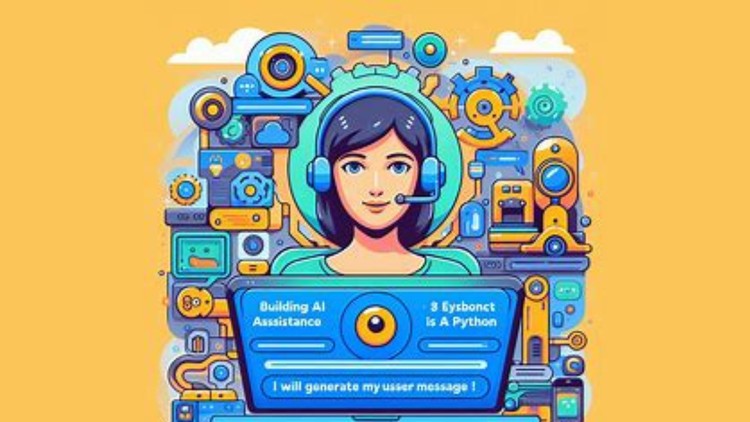
Create Your Own AI Assistant with Python: Learn Basics of Speech Recognition, Text-to-Speech, and More.
What you will learn
AI assistant from Scratch
Building the AI Assistant with python
Building Core AI Assistant Features
Understand Basic python and understand project making
Students will able to think how to make own’s project with total independence
Basic knowledge of AI Artificial Intelligence AI based Assistant
Why take this course?
🎉 Course Title: Building AI Assistant with Python: A Beginner’s Guide 🚀
📚 Course Headline: Create Your Own AI Assistant with Python: Learn Basics of Speech Recognition, Text-to-Speech, and More! 🌍
🌍 Course Description:
Embark on a thrilling educational adventure with our course “Building an AI Assistant from Scratch”! Dive into the dynamic world of Python programming to create your own intelligent assistant. This course is meticulously designed for beginners who aspire to understand and implement core artificial intelligence functionalities such as speech recognition, text-to-speech conversion, intent recognition, and more. 🤖
By completing this course, you will not only gain hands-on experience with Python but also build a fully-functional AI assistant with advanced features like translation, device lock management, and beyond. Get ready to join the ranks of innovative developers who are shaping the future of AI-driven applications. 🌟
What You’ll Learn:
- Introduction to Python Programming:
- Master the essentials of Python syntax and programming concepts. 🐍
- Set up your development environment using Visual Studio Code. 💻
- Text-to-Speech Conversion:
- Learn to install and configure the
pyttsx3library. 📚 - Implement basic text-to-speech functionality to give your AI assistant a voice. 🗣️
- Learn to install and configure the
- Speech Recognition:
- Explore the significance of speech recognition in AI. 🎤
- Get hands-on with the
SpeechRecognitionlibrary to enable your assistant to understand spoken language. 🔊
- Intent Recognition:
- Discover the role of intent recognition in enhancing user interaction with AI assistants. 🎯
- Define and implement intents and responses using regular expressions. 📈
- Building Core Functionality:
- Integrate text-to-speech, speech recognition, and intent recognition components to create the core of your AI assistant. 🧬
- Test and debug your assistant to ensure it operates smoothly. ✅
- Advanced Features:
- Expand your assistant’s capabilities with features like Translation, Dictionary, Date and Time, and more. 🌍
- Integrate external APIs for live data retrieval to keep your assistant up-to-date. 🔄
- Refine the user experience with improved response generation techniques. 🚀
- GUI Development:
- Build a graphical user interface (GUI) using Tkinter for an intuitive user interaction. 🖥️
- Integrate your AI assistant’s functionalities into the GUI to create a complete application. 🎨
- Learn the basics of Tkinter to understand how to create visually appealing and functional interfaces. 📈
Ready to embark on this Python programming odyssey? Sign up now and start your journey towards becoming an AI assistant expert! 🚀💻